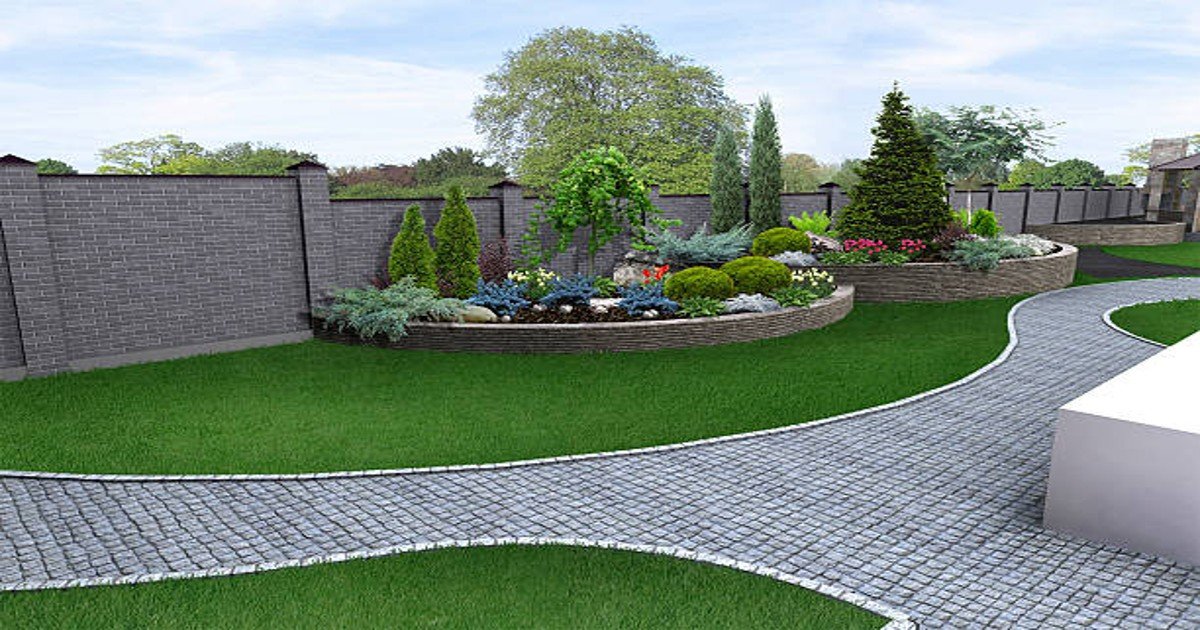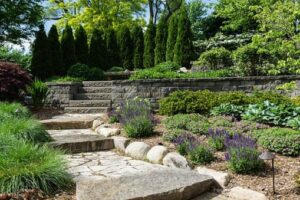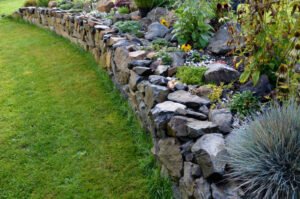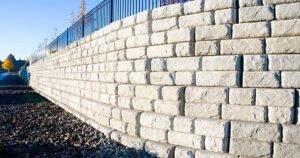When it comes to landscaping in Williamsville NY, retaining walls are not only functional but can also add a touch of elegance to your outdoor space. Whether you’re looking to prevent soil erosion or create a multi-level garden oasis, designing and building retaining walls requires careful planning and expertise.
In this blog post, we’ll explore expert tips for creating stunning and durable retaining walls in Williamsville, NY. Let’s dive in!
Purpose and Benefits of Retaining Walls
Retaining walls serve a crucial purpose in landscaping by holding back soil and preventing erosion. In hilly areas like Williamsville, NY, where the terrain can be challenging, these walls help create level surfaces for various outdoor activities. Additionally, they offer structural support to prevent landslides or slope failures.
Beyond their practical functions, retaining walls add visual interest to your landscape design. By incorporating different materials and textures, you can enhance the overall aesthetic appeal of your outdoor space. These structures also allow for the creation of terraced gardens or seating areas that maximize usable space while adding dimension to your yard.
When well-constructed and properly designed, retaining walls can increase property value by improving both functionality and curb appeal. With thoughtful planning and professional installation, these structures can transform your outdoor living area into a beautiful and functional oasis.
Understanding the Different Types of Retaining Walls
When it comes to designing and building retaining walls in Williamsville NY, understanding the different types available is crucial.
One common type is gravity walls, which rely on their weight to resist pressure from behind and are suitable for low-lying areas. Another option is cantilevered walls, which have a concrete base with a stem wall that extends back into the slope for added support.
For taller structures, consider using anchored walls that are reinforced with cables driven into the soil behind the wall. These provide additional stability for challenging landscapes.
If you’re looking for a more natural aesthetic, opt for stacked stone or timber retaining walls that blend seamlessly with your outdoor space. Each type has its own unique advantages and considerations based on factors like height, soil conditions, and budget constraints.
Important Read: Building a Strong Foundation: The Importance of Retaining Wall Installers in Clarence
Factors to Consider When Designing a Retaining Wall in Williamsville, NY
When designing a retaining wall in Williamsville, NY, there are several important factors to consider.
- Evaluate the soil conditions and drainage patterns of the area where the wall will be constructed. This will help determine the type of wall that will best suit your needs.
- Consider the height and length of the retaining wall as these factors will influence its stability and required reinforcement. Additionally, think about any potential loads that may need to be supported by the wall, such as heavy rainfall or landscaping features.
- Another crucial factor is obtaining necessary permits and approvals from local authorities before starting construction. Compliance with regulations ensures safety and avoids legal issues down the line.
- Take into account your budget for designing and building the retaining wall. Factor in costs for materials, labor, and any additional features like drainage systems or decorative finishes.
By carefully considering these factors upfront, you can create a durable and functional retaining wall tailored to your specific needs in Williamsville, NY.
Choosing the Right Materials for Your Retaining Wall
When it comes to choosing the right materials for your retaining wall in Williamsville NY, there are several factors to consider.
- First and foremost, you’ll want to select materials that complement the overall design of your landscape.
- Concrete blocks are a popular choice for their durability and versatility. They come in various shapes, sizes, and colors, allowing for a customized look that suits your aesthetic preferences.
- Natural stone is another option that adds a rustic charm to your outdoor space. Its timeless appeal can enhance the beauty of your garden while providing structural support.
- Wood is a more traditional choice that can create a warm and inviting atmosphere. However, it requires regular maintenance to prevent rotting or warping over time.
No matter which material you choose, make sure it’s well-suited for the climate in Williamsville to ensure longevity and stability for your retaining wall installation project with Soil and Seed Landscaping.
Hiring a Professional vs DIY: Pros and Cons
When it comes to designing and building retaining walls in Williamsville, NY, one important decision you’ll need to make is whether to hire a professional or take the DIY route. Both options have their own set of pros and cons that you should carefully consider before making a choice.
Hiring a professional can provide peace of mind knowing that your project is being handled by experienced experts who are well-versed in proper installation techniques. They can offer valuable insights, ensure the job is done correctly, and save you time and effort.
On the other hand, opting for a DIY approach may be tempting for those looking to save money on labor costs. However, it requires ample research, skill, and physical labor. Incorrectly installed retaining walls can lead to costly repairs down the road if not done properly.
Weigh your budget, time availability, skill level against the complexity of the project before deciding whether to hire a professional or tackle it yourself.
Maintenance Tips for Longevity of Your Retaining Wall
Maintaining your retaining wall is crucial for its longevity and structural integrity. Regular inspections can help identify any issues early on, preventing major problems down the line. Keep an eye out for signs of erosion, cracks, or leaning sections that may indicate underlying issues.
One key maintenance tip is to ensure proper drainage around the retaining wall to prevent water buildup and soil saturation. Properly functioning drainage systems can extend the life of your wall by reducing pressure from excess water.
Inspect the wall for any vegetation growth as plant roots can weaken the structure over time. Trim back any overhanging branches or vines to prevent them from causing damage.
Regularly clean your retaining wall to remove dirt, debris, and stains that could deteriorate the materials over time. Use gentle cleaning methods appropriate for the type of material used in your wall construction.
By staying proactive with maintenance tasks and addressing any issues promptly, you can enjoy a durable and aesthetically pleasing retaining wall for years to come.
Conclusion
Designing and building retaining walls in Williamsville, NY requires careful consideration of various factors such as the purpose of the wall, materials used, and whether to hire a professional or opt for a DIY approach. By understanding the different types of retaining walls available and choosing the right materials suited for your specific needs, you can create a functional and visually appealing structure that enhances your property.
Whether you decide to work with experienced wall contractors like Soil and Seed Landscaping or take on the project yourself, proper maintenance is key to ensuring the longevity of your retaining wall. Regular inspections, addressing any issues promptly, and following maintenance tips will help preserve the structural integrity of your wall for years to come.
With these expert tips in mind, you can confidently design and build retaining walls that not only serve their intended purpose but also add value and beauty to your outdoor space in Williamsville, NY. A well-constructed retaining wall can transform your landscape while providing essential support and erosion control where needed.




